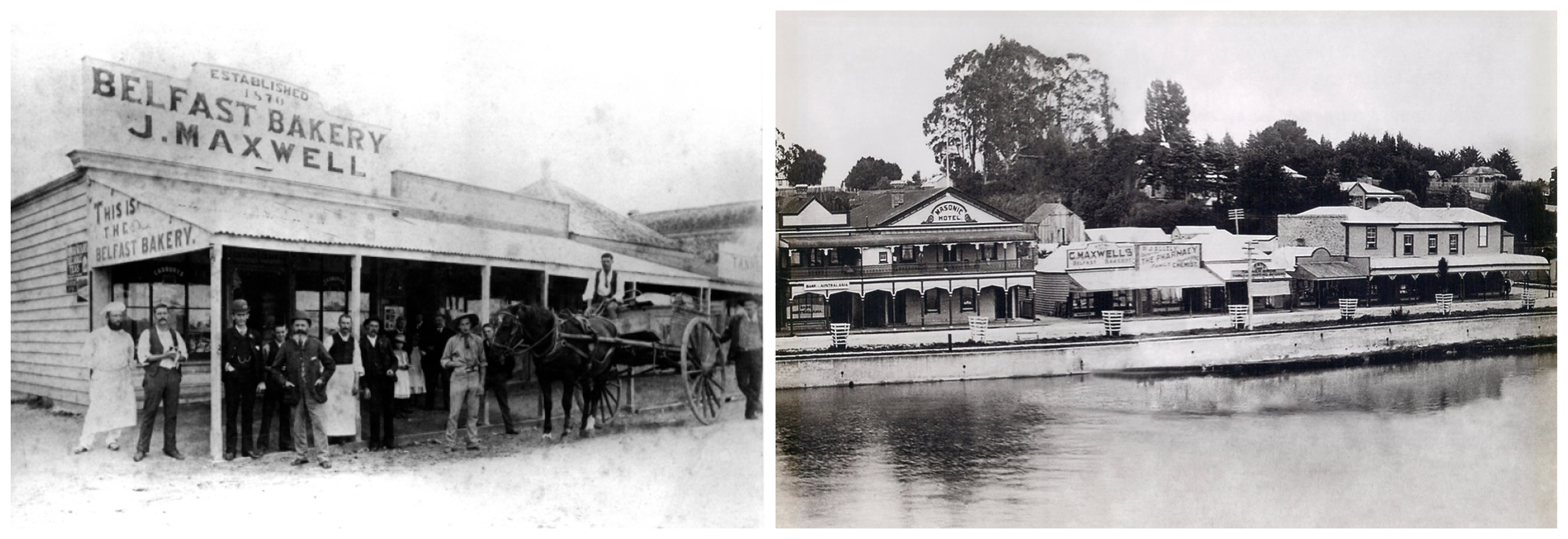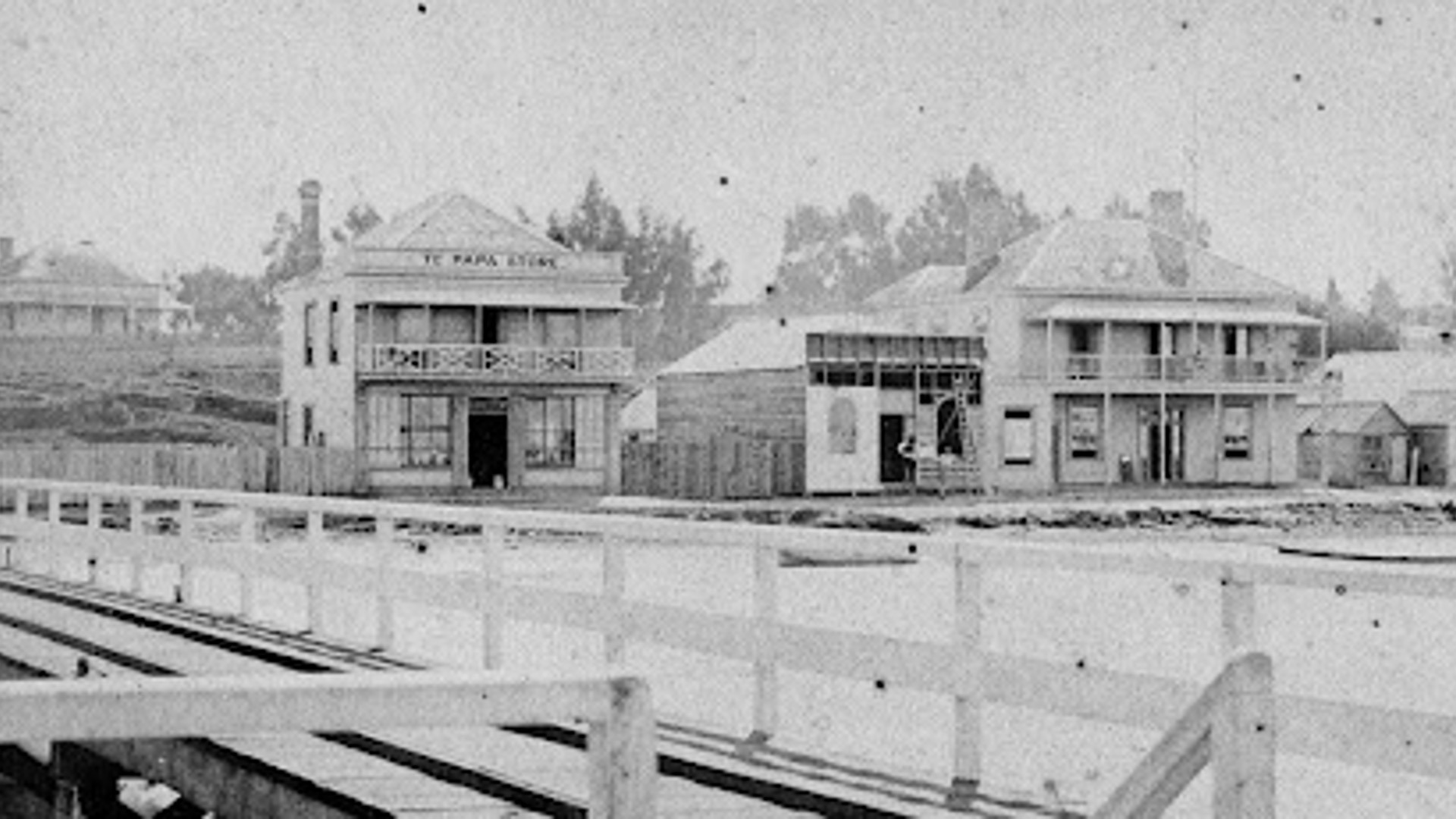
Masonic Park - site of the Masonic Hotel (1866-1993): The Masonic Hotel was built prior to December 1866. Despite attempts to save it, the historic building was demolished in 1993 which left an open space reserve. In 2014, workers upgrading the reserve found historic artefacts. Archaeologists excavated the site uncovering the brick foundations of large baking ovens from two different time periods, the oldest from a bakery, 147 years earlier.
Map No 39
73 The Strand (west),
Tauranga, 3110

The Discovery of a Bakery and its journey from 2014 to 2025

2014, Heritage New Zealand Pouhere Taonga were called in to investigate the historic remains of an 1870s bakery after after contractors began renovating the reserve on May 9, 2014. The early cooking ovens are from two different time periods with one dating back to the early 1870s, or possibly earlier, and a later one that has not been accurately dated. The bakery had a shop frontage on The Strand and was still operating in the World War II. The Masonic Park site was historically home to the Masonic Hotel from 1865 until it was demolished in 1993, with council deciding the site was to become an open space reserve in 2010. Rachel Darmody, an archaeologist from Heritage
New Zealand Pouhere Taonga, explained it was rare to find such a well-preserved bakery from this time period anywhere in New Zealand. That it helped us with knowledge of early commercial practices in Tauranga. The only other examples Rachel said were from the goldfields of Central Otago and one site in Dunedin. The renovation project was scheduled to be completed by end of June (2014) but was paused to evaluate the find. The park opened later in the year with the bakery exposed for the public and tourists to view. Sadly in 2024 the Bakery was covered over, and although there is a plaque showing
where it is today, this will be missed by most.

Background to Masonic Park (est. 2010), by Debbie McCauley
The Masonic Hotel was built prior to December 1866 by James Campy and extended the following year. Despite attempts to save it, the historic building was demolished in 1993 and in 2010 an open space reserve was created on the site. Workers upgrading the park in 2014 when they stumbled across the historic artefacts that led to archaeologists excavated the site and uncovering the brick foundations of large baking ovens from two different time periods, the oldest from a bakery established 147 years earlier which contains rocks used to insulate the oven during baking.
Background to BEACH ROAD, (before it was called The Strand) - a little history. Tauranga City Library’s archives.
Beach Road, Te Papa was The Strand, Tauranga we know and love today. It was originally a beach and simply described as “the beach” before becoming Beach Road and then Beach Street. “Beach road” wasn’t just briefly used pre-European settlement either. As Mr Barry has shown us, even when Tauranga was large enough to publish its own Bay of Plenty Times, businesses advertising still used “Beach Road, Te Papa”, or “Beach Road, Tauranga”, only later switching to “The Strand, Tauranga”. This image below from within the papers of Earnest Edward Bush (1909-1988) (AMS 361) shows the Strand just 7 to 10 years after the Battles of Pukehinahina and Te Ranga. The ragged shoreline shows no sea wall and the water appears alarmingly close to the shop fronts.

The first sea wall came in the late 1870s, first as a wood wall and then later upgraded to stone after some reclamation in 1902. Later still in the 1920s, significant land reclamation was made to make way for a rail line and then again in the 1960s and 70s for parking space. But for now, in the early 1870s, a good gale would bring the sea right over the road and into the shop fronts. Already there are many buildings along the road, including a general store simply described as “Te Papa Store”. To the right of Te Papa Store, and still under construction, is David Asher’s store. David Asher was an industrious early resident of Tauranga town, describing himself in 1880 as storekeeper, draper, auctioneer and insurance agent. He also ran a boarding residence up on Wharepai Domain. Such diversity often typified what it took to survive or thrive in such a small town of just a thousand or so people, during the early years of the international "long depression" (1873-1896).
Next to Asher’s store is the iconic Masonic Hotel (est. 1865), advertised as “first-class accommodation for boarders and travelers”, boasting it’s “billiard room (to be) one of the finest in the colonies”. There were three hotels along this stretch, as well as a boarding house, and right at the end a Māori Hostel catering to Māori visiting the area, often for Native Land Court hearings. But it was Rotorua’s pink and white terraces that were bringing in a lot of the Pākehā visitors. After arriving by boat they would overnight before catching a coach over to Rotorua, spending a night on the Strand again on the return leg. The boats were received at either the public Wharf at the end of Wharf Street (1871- 1920s), later called Coronation Pier, or by the private Victoria Wharf (1878 – 1920s ) at the end of Harington Street. These Wharves were also where supply shipping from Auckland arrived.
Beside the Masonic Hotel would eventually be a bakery, the remains of which were discovered in 2014 and are now fenced off and visible within the Masonic Park area. We can see that bakery in this next, and slightly later photograph from the latter part of the 1870s.
We know it’s later because we can see the first seawall, and in the background the old military hospital and former missionary agricultural school, has been torn down (1874) and replaced with the first government building ( - 1902). The bakery, visible between the Masonic Hotel and the Medical Hall, was owned by John Maxwell (1836-1904). The very first edition of the Bay of Plenty Times (September 4, 1872) carried his advertisement:
But by 1875 (September 11), this "Belfast Bakery" though unmoved, was now located at The Strand.
Learn more here: Tauranga Historical Society Blog 12 September 2014